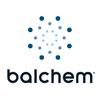1. Introduction
Lactoperoxidase is one of the main protein enzymes in milk, and is found in average concentrations of 30 mg/L, much higher than the biological requirements for an optimal enzymatic reaction [1]. This enzyme belongs to the group of oxidoreductases, and is responsible for the bactericidal and bacteriostatic phase during the first hours after milking [2-4]. Lactoperoxidase enzyme is a milk protein with special biological activities, and particularly those that are effective against microorganisms may allow the development of new products in fields such as infant nutrition, animal feed, cosmetics or the pharmaceutical industry. Lactoperoxidase is part of a relatively complex natural defense system, which allows the formation in the milk itself, or in the digestive tract of substances with great antimicrobial power. The enzyme lactoperoxidase (LPO), as well as its activating agents hydrogen peroxide and potassium thiocyanate, are an integral part of milk and colostrum, and do not affect their organoleptic properties, thus ruling out the opinion of the appearance of foreign substances. When evaluating the activity of the LPO enzyme in colostrum, certain contradictions are revealed among some authors since for example Perraudin [5] and Kumar, et al. [6], establishes that the concentration of LPO in the colostrum of cows, analyzed on the same day of delivery is low and, increases rapidly to reach a maximum four or five days after delivery, then this concentration decreases and reaches a level that is maintained for the rest of the lactation period. but [5], reported that the activity of LPO in colostrum is high and, a few days after delivery, reaches a maximum; then, decreases to the levels of normal milk.
According to Bradford [7], a colostrum is considered to be of good quality when the concentration of immunoglobulins (Igs) reaches ≥ 50 mg/ml. In the research conducted by Elizondo [8], in Costa Rica, the concentration of Igs ranged between 10 and 140 mg/ml, with an average of 85 mg/ml. These high values of immunoglobulin concentration in colostrum, are very important, since it provides passive immunity for the newborn calf; it also has profound effects on the development of the intestine of the neonate, in terms of the area and circumference of its villi. On the other hand, the proportion between height and depth of the crypt in the duodenum is increased, alternatives that will enhance weight gain in calves, when it has been observed that the weight of calves fed with colostrum is greater compared to calves deprived of colostrum.
Among the non-specific immunological components, pointed out by Fernandez, et al. [9] and Godden, et al. [10], they indicate that in colostrum there are antimicrobial factors among which the following stand out: Lysozymes, which act on the peptidoglycan of the cell wall of bacteria. Lactoferrin, which causes iron deficiency in bacteria that require this factor for their development. The Lactoperoxidase/Thiocynate/Hydrogen Peroxide Complex, which is essential to enhance the colibacillary activity of colostral acids.
According to the authors Fernandez, et al. [9], they analyzed colostrum and determined its Immunoglobulin G (IgG), if you are mentioning this for the first time write out in full before abbreviations concentration by means of radial immunodiffusion (RID), finding that colostrum collected in the first 6, 10 and 14 hours after calving, had significantly lower IgG concentration than colostrum collected 2 hours after calving and, that colostrum from cows in their third or more lactations collected two hours after calving had higher concentrations than colostrum from cows in their first or second lactation. On the other hand, differences between breeds were evaluated by Bradford [7], who measured the concentration of Ig in the colostrum of cows of various breeds, finding in Jersey 9.0%, Ayrshire 8.1%, Brown Swiss 6.6%, Guernsey 6.3%, and in Holstein 5.6% of Ig, pointing out the importance of the breed in the contribution of immunoglobulins to the colostrum.
The investigations of Godden, et al. [10], suggest that the duration of the dry period has no major influence on the concentration of IgG in the colostrum but, short dry periods around 30 days can result in a lower production volume. Mayasari, et al. [11], the duration of the dry period can influence the quantity and quality of colostrum that dairy cows produce at calving. Later studies by Chamorro [12], warned that dry periods less than 45 days result in a lower volume of colostrum and a lower concentration of IgG in the colostrum compared to cows that had dry periods longer than 45 days.
On the other hand McGee and Earley [13], pointed out that another important factor for adequate colostrum production is the energy level in the diet during prepartum; they also suggested that balanced but, not excessive energy levels increase the concentration of IgG, in colostrum at parturition; also concluding that higher concentrations of growth factors and energy during prepartum, can result in a higher concentration of IgG in colostrum. The reports of Erickson [14] and Amburgh [15], highlight the importance of colostrum, not only from the point of view of the antibodies it contains and the protection of the calf from infectious diseases in its environment; but also, the extraordinary current importance of the nutritional factors that colostrum contains. These factors, some known and others unknown, are the subject of study in research institutes and universities around the world, proof of this is the importance that pasteurized colostrum has gained in the daily diet of high-performance athletes; as well as in patients suffering from different types of cancer. In discussion forums, according to Bracho [16], Bracho [17], Sing, et al. [18], the banks of colostrum, required for feeding calves, in intensive bovine livestock systems, it would be very interesting, to implement the extension of the useful life of colostrum, where laboratory and, in the management of colostrum for the constitution of colostrum field experiences, have demonstrated the effectiveness of the activation of the lactoperoxidase enzyme system (SLPO). Taking advantage of the high concentration of the peroxidase enzyme in colostrum, and its response, when the activation of the enzymatic system is done, with the addition of donor substrates: Hydrogen Peroxide and Potassium Thiocyanate, in nanomolar concentrations; that is to say, (10-9 to 10-11) which take off the enzymatic system and, according to Bracho [16], Bracho [17], Sing, et al. [18], extending the life of colostrum even in the absence of refrigeration. Considered a very simple technology. From this review, it can be concluded that the lactoperoxidase enzyme is a whey protein, which has a natural protection system against microorganisms that affect the gastrointestinal tract of calves; affecting their development and growth. Its biotechnological importance lies in the fact that it has a natural protection system against pathogenic microorganisms that affect the growth and development of mammals, attributing functional food qualities to colostrum and milk.
2. Methodology
In the herd of crossbred cows of the Experimental Station "Santa Maria", located on the road to Villa de Cura, Aragua State, Venezuela, attached to the Faculty of Veterinary Sciences, Department of Public Health of the Central University of Venezuela (UCV). A sampling of colostrum was carried out following the techniques or procedures of sampling of milk and dairy products COVENIN Method 903-1992 [19] COVENIN 938-1983 [20]. Cows were selected in the first, second and third lactation. On the first day postpartum, colostrum samples were taken from each of the four quarters from the udder, maintaining this sampling in the milk during the first month of lactation. PH, temperature and acidity were determined.
2.1. Determination of pH and Temperature
Instrumental methods were used to take pH and temperature readings in the colostrum and milk samples, using a Corning 240 pH meter with a built-in temperature pilot.
2.2. Determination of Titratable Acidity
Was used the method of Venezuelan Commission of Industrial Standards. (COVENIN) Norma No 658-1986. Determination of titratable acidity [21].
As well as qualitative detection of the enzyme lactoperoxidase and, the concentration of its activity was quantified.
2.3. Determination of Peroxidase (Qualitative method)
-In this detection, a 10% guaiacol solution in acetone was used (prepared 2-3 days before use).
-10 ml of the prepared sample was placed in a test tube with a pipette.
-2 or 3 drops of 3% H2O2 solution were added.
-Then, 8 drops of 10% guaiacol solution were placed on the walls.
-The formation of a reddish band in the contact area was indicative of the presence of peroxidase (Arnold test) Vargas and Lopez [22] and method enzymatic analysis of peroxidase of Putter [23].
2.4. Quantitative Determination of Peroxidase in Milk
Was used the method enzymatic analysis of peroxidase of Putter [23], of in which a phosphate buffer (0.1 mM, pH 7) composed of monobasic potassium phosphate (HM2PO4) and dibasic potassium phosphate (K2HPO4 3H2O), in addition to guaiacol solution (20.1 mM) and hydrogen peroxide solution (12.3 mM) was used.
-The following were introduced into a cuvette: 3 ml of phosphate buffer (0.1M); 0.05 ml of guaiacol solution (0.3 mM), 0.10 ml of milk sample and 0.03 ml of hydrogen peroxide solution (0.1 mM).
-The solution was stirred and allowed to react for two minutes at 25°C, according to Vargas and Lopez [22].
-The extinction of the solution was read in the spectrophotometer at 436 nm wavelength. It was based on the Principles of Enzymatic Analysis of AOAC official method VI edition [24].
Procedure:
-20 ml of milk was diluted with 20 ml of water in a 50 ml flask, heated to 37 °C, adding 2 ml of 10% acetic acid and stirring. After 10 minutes, 2 ml of 1N sodium acetate was added, allowed to cool and fill to the mark, filtered.
-5 ml of filtrate was taken, placed in a 50 ml flask and filled to the mark with phosphate buffer. -0.3 ml of the previous solution, 0.25 ml of Rothenfusser reagent, 0.05 ml of 1% H2O2 were placed in a spectrophotometer tube.
-It was stirred and read at 540 nm after 60 seconds of mixing the reagents. Blank
- 3 ml of distilled H20 plus the reagents.
-The volume of enzymatic activity (VAE), is obtained by replacing the absorbance values obtained in the following mathematical relationship:
Where:
V=Volume of solution in the Spectronic cell
Δ E= Measured optical density change (absorbance)
E= Guaiacol extinction coefficient (435nm.=6.39cm2/μmol
D= Distance of 1cm. (light path in the cuvette).
ΔT= Time required for the reaction two (2) minutes Linden, et al. [25].
0.100= Extinction increase coefficient.
1000= Conversion to liter.
The result is expressed in enzymatic units per ml of milk. The structure of Heme Lactoperoxidase, which can be seen in Figure 1.
Figure-1. Structure of Heme Lactoperoxidase [23].
2.5. Basis of the Method
The enzymes are determined based on the activity in relation to the volume or weight (relative activity). The enzymatic activity is typically measured under specific controlled conditions, over a specific period. Thus, the activity can be evaluated by: a) monitoring the disappearance of the substrate. b) Monitoring the appearance of the guaiacol dehydrogenation product (GDPH) in a period of two (2) minutes.
In this case, an endpoint method based on the spectrophotometric determination of the guaiacol dehydrogenation product (GDPH) was used the method, Cx/HF 99/12 [26].
2.6. Preparation of the Standard Curve
- Mother solution (in distilled water): 0.1 mg of lactoperoxidase per ml.
- Standards were prepared (in sterile milk) containing 1- 2.5 5- 10- 15- 20 mg of lactoperoxidase per liter of milk. To do this, add 0.2 – 05, - 1.0 – 2.0 –3.0 of the mother solution to each 20 ml portion of milk.
- These standards were treated as milk for the determination of peroxidase.
- The optical density curve was constructed as a function of concentration.
2.7. Statistical analysis
The colostrum of cows on the first day of delivery in their first, second, third and more lactations was characterized for the parameters: pH, temperature and volume of enzymatic activity, by descriptive statistics using the Statistix package version 4.0 Radermarche and Barcellan (NTTS) [27]. Non-parametric one-way statistics Kruskal-Wallis statistical test was also applied for the levels: of first, second, third and more lactations, in the characterized variables [27]. Was used the SAS-STAT statistical system [28], to determine their independence.
3. Results
The results for the variables: acidity, pH, and volume of enzymatic activity are summarized in Table 1, reporting the value of the median of the data obtained, considering that it represents the best behavior of the central tendency of the data. It is also presented, the enzymatic activity of LPO in the colostrum of cows, from the first day postpartum, in the milk during the first month of lactation, in the first, second, third and subsequent lactations or births.
In the mentioned table we can see that the acidity expressed in ml of NaOH/100ml of colostrum, decreases from the first to the third and further lactation (37.68 - 27.13 and 26.13) respectively.
The pH expressed as equiv/L does the same. (5.8 - 5.75 and 6.2). The enzymatic activity presented a different behavior expressed in U/ml, reported 124.42 in the first lactation, then rose in the second lactation to 182.89, and then decreased in the third and more lactations to 164.22.
Regarding milk during the first month, the acidity in first lactation cows was very high 19.09; In the second lactation it still remains high at 18.92, decreasing in the third lactation to values of 17.0. The pH remained within the normal value of milk 6.5. The enzyme activity continued to increase from the first to the third and more lactations (383.9 - 394.39 and 753.54) respectively.
Table-1. Characteristics of colostrum of cows on the first day postpartum and of milk in the first month of lactation, in the first, second, third and more lactations
The median of the colostrum data was subjected to one-way nonparametric testing procedures, using the Kruskal-Wallis test, the results of which are shown in Table 2.
The Kruskal-Wallis analysis presented in Table 2, indicated that the variables: pH, temperature, acidity and enzymatic activity were not significant, indicating their independence as to whether the cows are in first, second, third and more lactations in the colostrum.
Table-2. Kruskal-Wallis analysis of the first, second, third and subsequent lactations with respect to the variables: pH, temperature, acidity and volume of enzymatic activity in colostrum.
4. Discussion
As can be seen in Table 1, the values for acidity, pH and volume of enzymatic activity explain the characteristics of colostrum; coinciding with authors: Bracho [1, 3, 4], where it is observed that the acidity is very high, varying in a decreasing manner from the first to the third and more lactations according to the values of the median of the data ranging between 37.68; 27.13 and 26.13 (ml of NaOH 0.1 N/100 ml).
On the other hand, the acidity of the milk in the first month of lactation is lower, and varies according to the median of the data, from the first to the third and more lactations, approaching that indicated by Bjorck [1], Bracho [4], to the values established in the legal regulations; whose value ranged between 19.09; 18.92 and 17.00 (ml of NaOH 0.1 N/100 ml). The pH value in colostrum was detected as low (5.8; 5.75; to 6.2 equiv/L) depending on the lactations, differing from that of milk in the first month of lactation, which was 6.5 equiv/L in each of the lactations studied, coinciding with Bracho [2], Bracho [3], Perraudin [5], Kumar, et al. [6].
The volume of enzymatic activity of colostrum, in the lactations studied in this research, according to the value of the median of the data, presented certain variability, with tendencies to low values coinciding with Perraudin [5], Bradford [7], Fernandez, et al. [9], Godden, et al. [10], Mayasari, et al. [11], Chamorro [12], McGee and Earley [13], Erickson [14], Amburgh [15], who maintained that it is low on the first day postpartum, increasing in the first month, to then remain at the values of normal milk; however, well above the value reported by Bjorck [1], Bracho [3].
In table 2, it can be seen that the colostrum in the first lactation reported values of 124.42 U/ml, rising slightly in the second to 182.89 U/ml, and then falling in the third and later lactations to 164 U/ml. This behavior coincides with Fernandez, et al. [9], McGee and Earley [13], who argued that the volume of activity is high in colostrum and then decreases in milk in the first month of lactation and in the different lactations or births evaluated, observing a volume of enzymatic activity in gradual increase, oscillating between 383.9 and 753.54 U/ml.
The volume of enzymatic activity of LPO and acidity, in the colostrum of cows is high in the first birth, and varies according to the lactations, where it could be attributed to the feeding and zootechnical management. the variability and the differences found, coinciding with what was reported by Bjorck [1], Bradford [7], Fernandez, et al. [9], Godden, et al. [10], Mayasari, et al. [11], Chamorro [12], Acidity is significantly higher in colostrum, as compared to raw milk and milk from cows positive for mastitis, with a tendency to decrease as the number of births increases.
The average volume of enzymatic activity in colostrum was lower than in raw milk at the first month of lactation, which agrees with what was reported by Bracho [3], Perraudin [5], McGee and Earley [13], Amburgh [15].
From the point of view of its nutritional and immunological value, colostrum, inseparably associated with its immunoglobulin content, constitutes a food resource in the nutritional management of calves within dairy herds, an assertion that the authors agree with Bracho [16], Bracho [17], Sing, et al. [18], which would strengthen a proposal for the creation of colostrum banks.
5. Conclusions
Lactations (births) in colostrum and milk in the first month of lactation influence the volume of enzymatic activity by varying its concentration.
In the characterization of colostrum for the parameters pH, acidity and enzymatic activity, it was found that the acidity is high and varies in a decreasing manner from the first to the third lactation, differentiating from milk in the first month of lactation, being within the limits established in the legal regulations.
The pH of colostrum was below the pH of normal milk.
The volume of enzymatic activity of colostrum presented fluctuations between the first and third lactation, which may be attributable to the lower pH.
The independence of each of the variables in colostrum was demonstrated. Colostrum banks constitute a food safety tool for calves; even as a strategy for the commercialization of colostrum aimed at specialized farms that require enhancing the development of calves in excellent production and productivity conditions for their specific purposes.
This article was originally published in Sumerianz Journal of Biotechnology, 2024, Vol. 7, No. 4, pp. 54-60 ISSN(e): 2617-3050, ISSN(p): 2617-3123. DOI: https://doi.org/10.47752/sjb.74.54.60. This is an Open Access article distributed under a Creative Commons Attribution License.

![Figure-1. Structure of Heme Lactoperoxidase [23].](/_next/image/?url=https%3A%2F%2Fimages.engormix.com%2FE_articles%2F55068_839.gif&w=1080&q=100)














